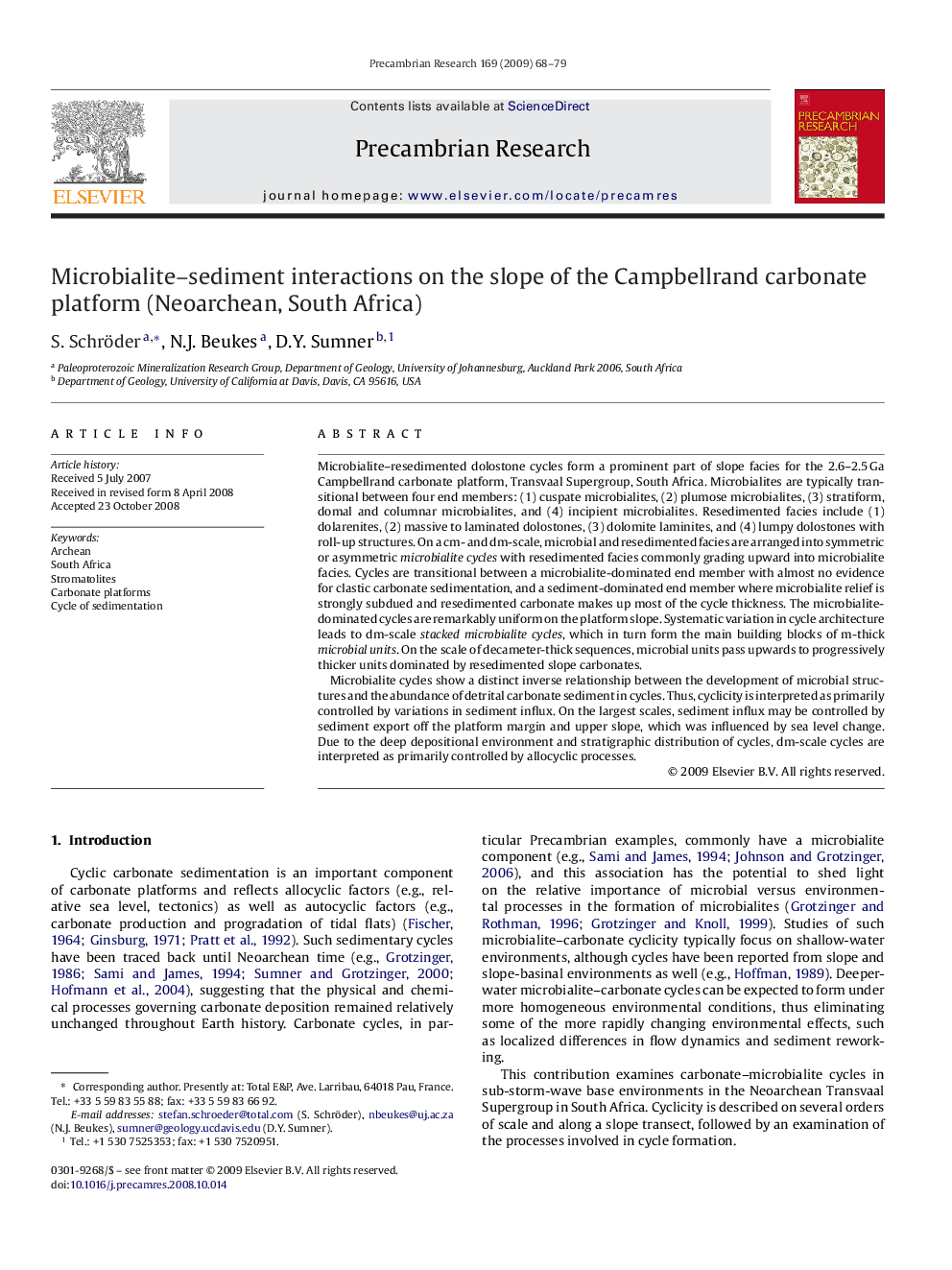| Article ID | Journal | Published Year | Pages | File Type |
|---|---|---|---|---|
| 4724178 | Precambrian Research | 2009 | 12 Pages |
Microbialite–resedimented dolostone cycles form a prominent part of slope facies for the 2.6–2.5 Ga Campbellrand carbonate platform, Transvaal Supergroup, South Africa. Microbialites are typically transitional between four end members: (1) cuspate microbialites, (2) plumose microbialites, (3) stratiform, domal and columnar microbialites, and (4) incipient microbialites. Resedimented facies include (1) dolarenites, (2) massive to laminated dolostones, (3) dolomite laminites, and (4) lumpy dolostones with roll-up structures. On a cm- and dm-scale, microbial and resedimented facies are arranged into symmetric or asymmetric microbialite cycles with resedimented facies commonly grading upward into microbialite facies. Cycles are transitional between a microbialite-dominated end member with almost no evidence for clastic carbonate sedimentation, and a sediment-dominated end member where microbialite relief is strongly subdued and resedimented carbonate makes up most of the cycle thickness. The microbialite-dominated cycles are remarkably uniform on the platform slope. Systematic variation in cycle architecture leads to dm-scale stacked microbialite cycles, which in turn form the main building blocks of m-thick microbial units. On the scale of decameter-thick sequences, microbial units pass upwards to progressively thicker units dominated by resedimented slope carbonates.Microbialite cycles show a distinct inverse relationship between the development of microbial structures and the abundance of detrital carbonate sediment in cycles. Thus, cyclicity is interpreted as primarily controlled by variations in sediment influx. On the largest scales, sediment influx may be controlled by sediment export off the platform margin and upper slope, which was influenced by sea level change. Due to the deep depositional environment and stratigraphic distribution of cycles, dm-scale cycles are interpreted as primarily controlled by allocyclic processes.
